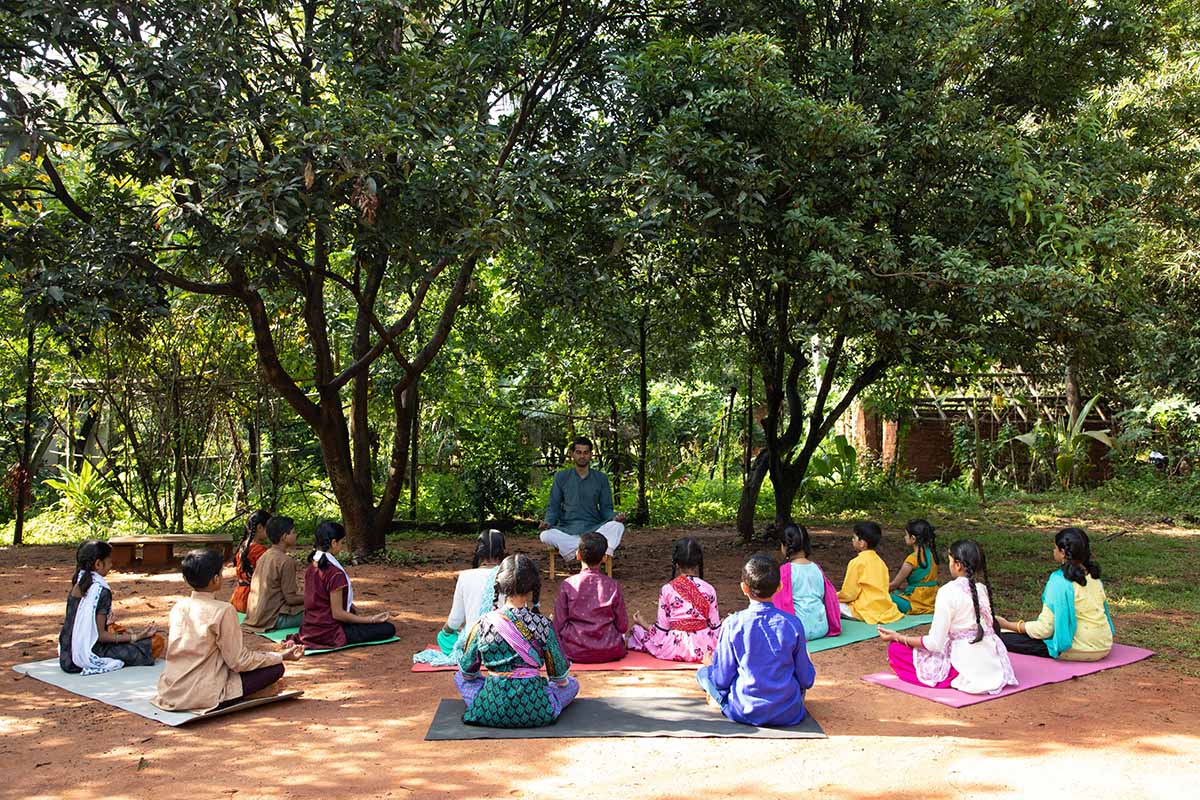
How wonderful it would be to gift our children 20 years of their life, full of joy, learning and experiences which they would cherish life long. For that, their education has to be learning and effort centered, where children learn to learn. It cannot be result and job centered.
Education must equip our future generation to be a part of the solution and not part of the problem, a problem that grapples our society today! Deteriorating health, faltering economics, ravaged environment, hypocritical and transactional relationships are some serious issues our world is facing today. For ages, the world has looked towards Bharath for a solution and today is no different. By adopting western education model over the last couple of centuries, we have increasingly become a part of the problem.
At VidyaKshetra, we are working on reclaiming and re-establishing the lost education model of Bharath, making it relevant to today’s context, which propounds new age thinking yet does not encourage materialism; which inspires our children to learn, observe and absorb Bharatiya samskriti. This Bhartiya model of education is built on principles like:
Hence the 1st vision element of VidyaKshetra is to create a Bhartiya model of education (curriculum, pedagogy, systems, culture, economic infrastructure) relevant in today’s time, place and situation. A model that becomes a viable alternative for more than 35 crore students of our country and subsequently for the whole world, providing them a fresh alternative as against the materialistic, unsustainable, result-centric, factory model based education system.
Our education system should give children clarity about what they want to do and what they are capable of doing in their life. Today’s children are left confused- they either do not know which path to take after their schooling or are systematically or sometimes explicitly forced to choose a stream that has the most lucrative returns in the future, (at present, engineering or medicine) even if they had some other inclination or possibility. And for those who don’t fit into above 2 streams, management/commerce remain as a third possibility. Ofcourse, these choices are purely based on the strength of their academic performances.
Therefore, our 2nd vision at VidyaKshetra is:
For ages 4 to 16 years:
For ages 16 to 21years:
Thus, career choice for the students will no more be an accident but it will be designed by natural choice. Panchkoshatmika Vikas and connected education methodology at VidyaKshetra offers children a holistic learning platform. After foundation building, these traditional methods, exposure to a breadth of subjects, coupled with learning from self-motivated acharyas, deep dive into each subject, enables children to identify the direction they want to take after 16 yrs of age. Once the direction is clear, between the ages 16 to 21, we work with them in molding their character through our offering of Bharatiya Jeevan Shiksha framework as well help them pursue their areas of interest through the Vritti framework, to enable them to stand on their own feet and pursue their area of interest.
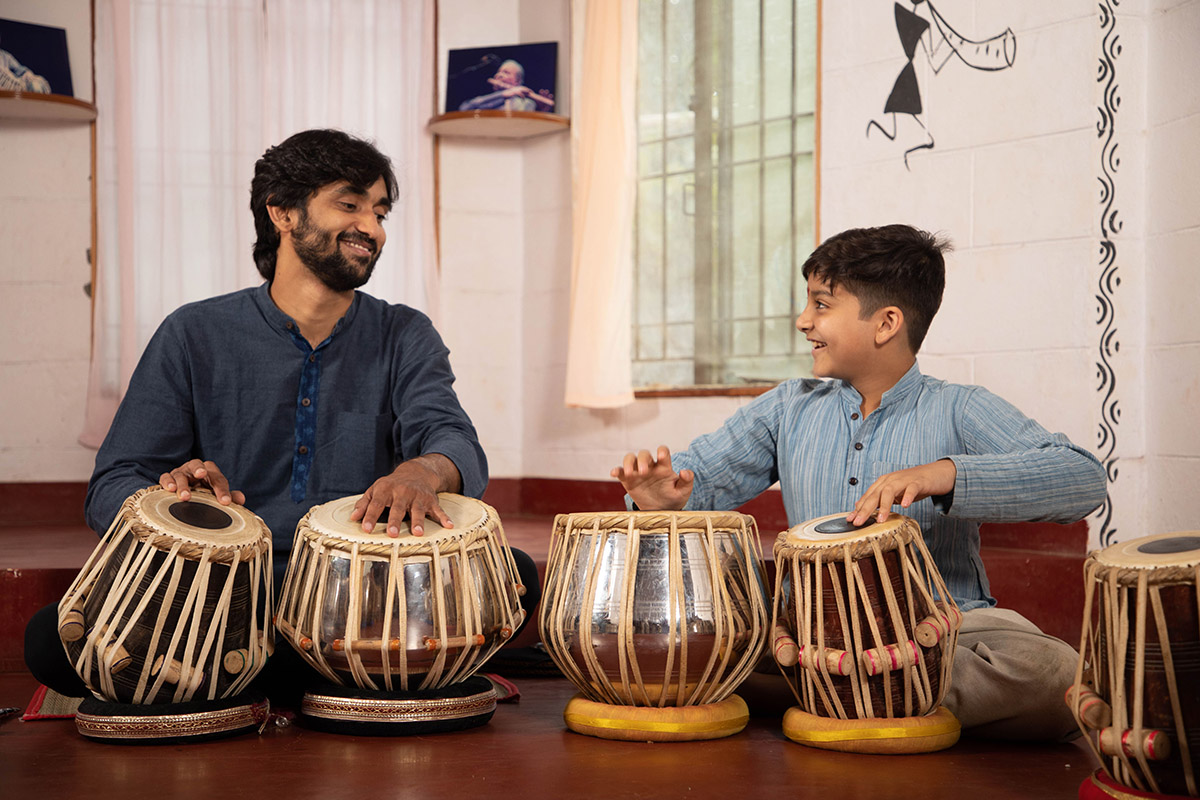
Due to the want of matching economic and social infrastructure, today we see almost all alternative education setups remain alternative mostly till grade 8, and the ones who have a little more appetite for risk, may offer alternative methodologies till grade 10. Post which, the child is again pushed into regular schools and subsequently joins the same factory model of ‘Grade 12-> Degree -> Job’.
Therefore, children need a model of education wherein they can pursue their heart’s calling, truly and freely.
At present, along with curriculum building and setting up the methodology for 16-21, complete with a list of mentors, we are also creating a social and economic infrastructure to enable such a model.
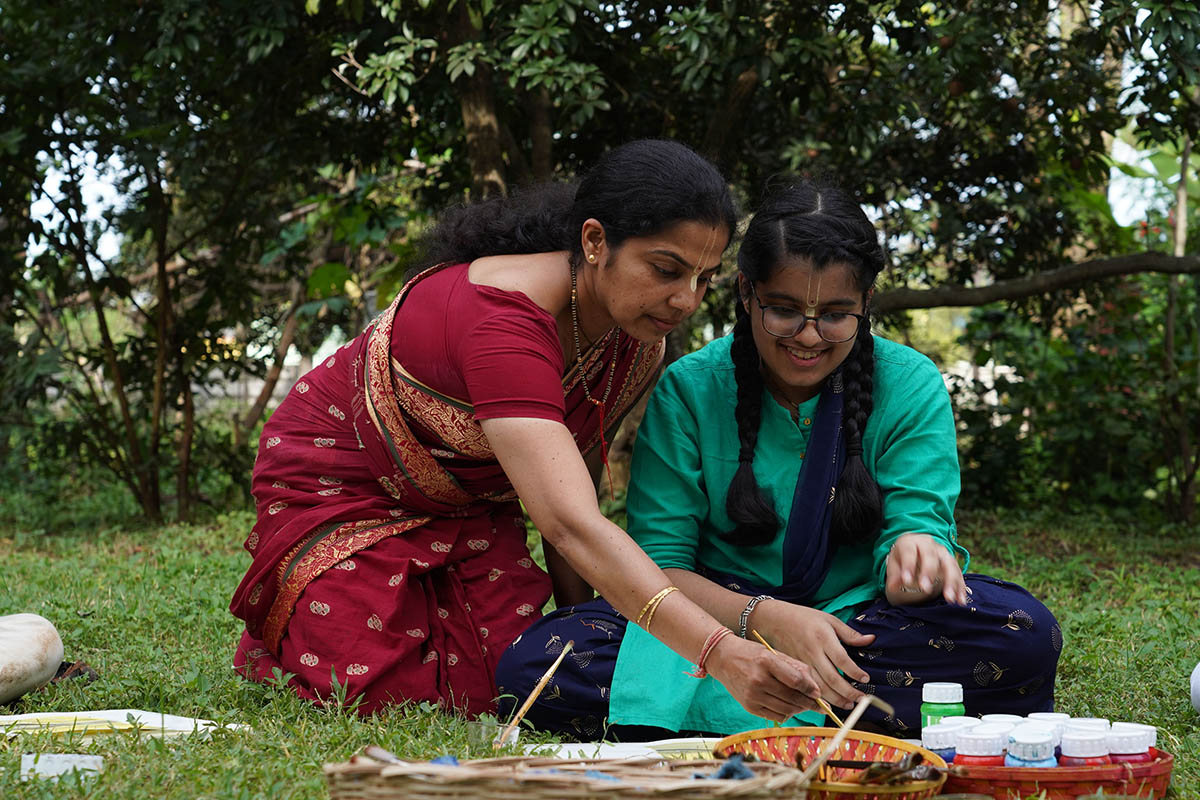
Children between the age of 16-21 years in VidyaKshetra focus 50% of their time studying with the expert (identified as a mentor for the student) in their identified Vritti. In the remaining time they study the following 10 subjects under the framework of Bharatiya Jeevan Shiksha:
Students who want to go in the direction of their Vritti after 16years, spend 50% of their time with identified mentors who are subject matter experts and learn in “Guru Shishya Parampara” method.
Today the social infrastructure is centralized and more urban centric. With the penetration of modern education in villages, the biggest aspiration harbored by the village child is to go to the city, and a city child is aiming to go abroad, either for studies or a job.
Urban living is inherently consumeristic as cities hardly grow anything. People living in the cities buy things of their need. Also, there are other associated problems. Eg: with no proper waste disposal systems, cities mostly dump their sewage, e-waste, chemical, industry, home and other types of waste in rivers or in a landfill. Thus, city life is unsustainable on both the ends of the consumer chain.
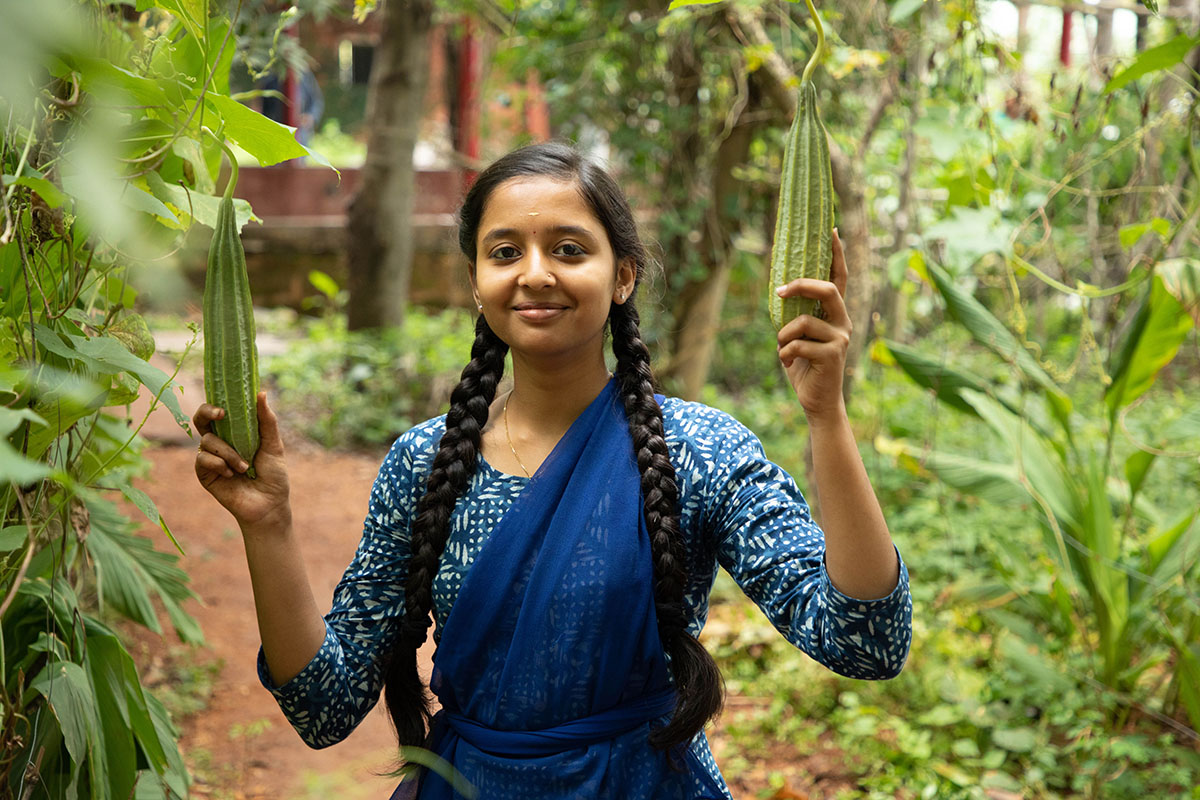
Children at VidyaKshetra are exposed to the precepts of how one can live in harmony with the society and ecology, they learn sustainable practices throughout their student life, are encouraged towards sustainable thinking and developing sustainable designs. Our education model includes:
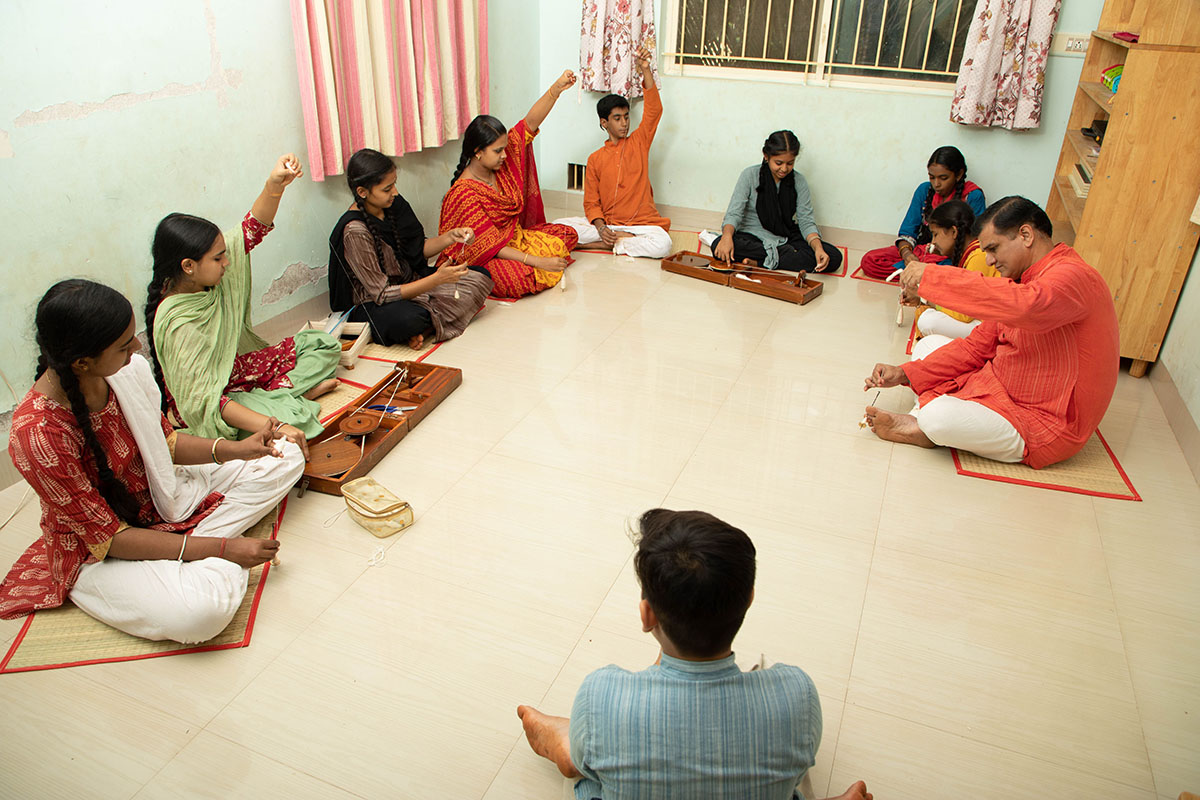
A few parents and teachers of VidyaKshetra have come together & started a community enterprise named “Purushartha,” which makes and shares chemical free soaps, organic sweets, organic snacks, chemical free groceries, eco-friendly clothes, panch-gavya products like dhoop, dant manjan, cooking oil etc. As a part of their learning, students at Vidyakshetra are closely teamed up with these teachers and parents, to learn how to manage and run (plan, procure, execute, packaging, book-keeping, distribute) these enterprises.
Exposure to the running of such enterprises will not only give them the experience of it but also confidence of becoming an entrepreneur themselves. If they wish to pursue a different vritti and participate in one of the enterprises part time to maintain themselves financially, they may be given that choice.
Over the ages, Indian education system was built on the principles of Panchkoshatmika vikas, thus ensuring holistic development of the child:
Focusing on building a healthy and fit body through good sleep, play and eating habits. Building good rhythms in the life of the child, both at the Gurukulam and working with the parents to enable good rhythms at home.
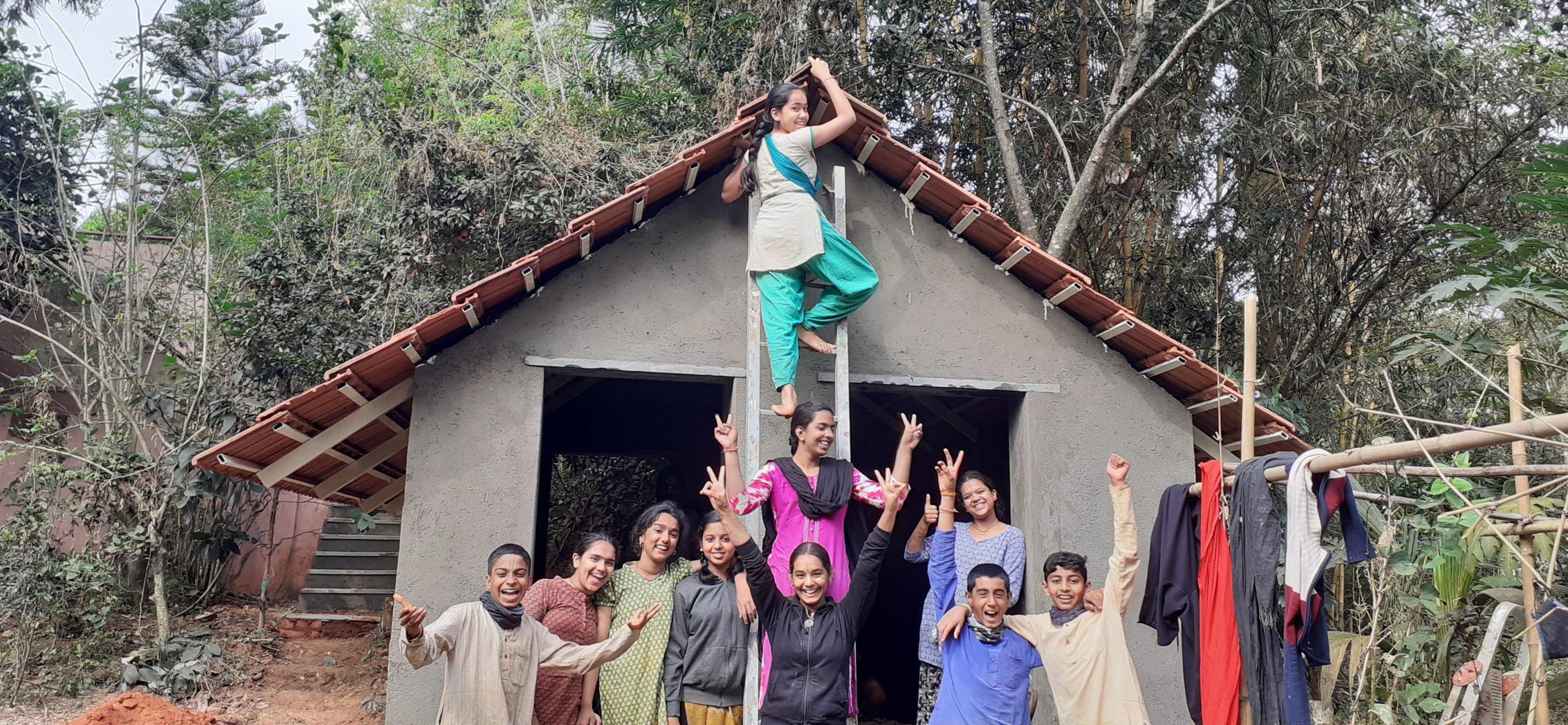
Strengthening the inner systems of the body and building on improving the vital energy in the child through yoga, kalari-payattu, kreeda, krishi and shrama. Also systematically work with the child to build good long lasting habits, discipline and rhythm. Working with the children to develop:
बन्धुरात्मात्मनस्तस्य येनात्मैवात्मना जित: ।
अनात्मनस्तु शत्रुत्वे वर्तेतात्मैव शत्रुवत् ॥ ६ ॥
“For him, who has conquered the mind, the mind is the best of friends; but for one who has failed to do so, his mind will remain the greatest enemy.” Bhagavad Gita 6.6
Thus, it becomes a very important part of upbringing of our children to guide them, enable them to understand, manage and control their mind. It’s our mind where our six enemies reside: kama (desire), krodha (anger), lobha (greed), mada (arrogance), moha (delusion), and matsarya (jealousy).
Nurturing the Manomaya kosha for students happens through building dhyana, focus, patience, determination, hard work, seva(service), self-confidence, skills and knowledge through:
Fear is a big deterrent in the learning process. Therefore, we constantly strive in helping children overcome their fears eg: fear of heights or water or exams etc. Once fear is uprooted, it frees up their mindspace. The education model is so constructed as to help them build self-confidence, internal discipline or self-discipline as against external control.
Today, to experience, express and achieve individuality is considered as the best possible outcome of any education and upbringing. On the contrary, in long lasting societies such as ours, interdependence was always considered as a higher virtue. In order to achieve individuality, today’s education, media (movies & print) and books are knowingly and unknowingly designed to sever the connections one has with vyashti- व्यष्टि (family and self) , samasti- समष्टि (society), srishti- सृष्टि (environment) and parameshti- परमेष्टि (God). In the process of reconstructing our lost societies(samaj) and nation(rastra), its dire need is to inculcate the higher virtues of interdependence in our children, help them see the value of connecting with their families, society, environment and spiritual pursuit. Neglecting the connection with any one of these four makes the development partial and sometimes counter productive. To make convenient decisions over the correct one is easy but it takes years of training one’s intellect to make correct decisions as against convenient one. We need to nurture the development of viveka विवेका (Wisdom) in them so that they can make sustainable choices and decisions.
At VidyaKshetra, we work with the children through various means so that they can develop viveka- विवेका.
First and foremost by being with such acharyas in the Gurukul environment who are self motivated to learn, share, sincerely practice and serve. Secondly, engaging with parents towards progress in their understanding and practice of such worthy principles of Bharatiyata. Next, by introducing children to different subjects, situations, environment, people and case studies. In their early childhood, the focus is on expanding their mental capacities through kanthastikarana and parayana. Later, exposure to rich stories & samvaada through our itihaasa such as Ramayana & Mahabharata; inquiry, reasoning, pramana, tarka, synthesis, analysis etc in the academic realm also helps build vigyanmaya kosha in children.
Academic excellence: Our pursuit is in building academic excellence for children. Students learn science through various experiments in physics, chemistry and biology. Our math and geometry curriculum is founded on the principles of conceptual understanding first and then deriving the formulas, rather than just rote learning them. Math and science is also an excellent tool to work with children to develop scientific & objective thinking, develop skills like analysis, synthesis, logical ability and quantitative ability. These abilities are foundational in developing viveka in our children.
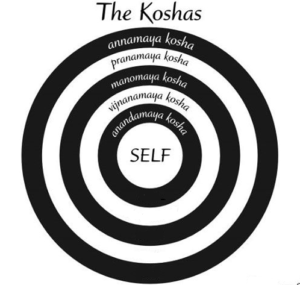
Prakriti Parichaya: Since the age of 4 till they are 10 year old, children go on प्रकृति परिचय (nature walk) on weekly basis, to understand nature (the flowers, the insects, weather, seasons, animals, trees, plants, water bodies etc) and by being in nature constantly, automatically they learn to appreciate its different aspects and develop a relationship with it.
At an appropriate age, children are encouraged to look inwards, at the essence and subtleties of what they learn at VidyaKshetra. Children must be taught to see everything, every action, every thought around them in connection with supreme consciousness – “व्यवहार (transaction/action/thought) and परमार्थ (God/Supreme).
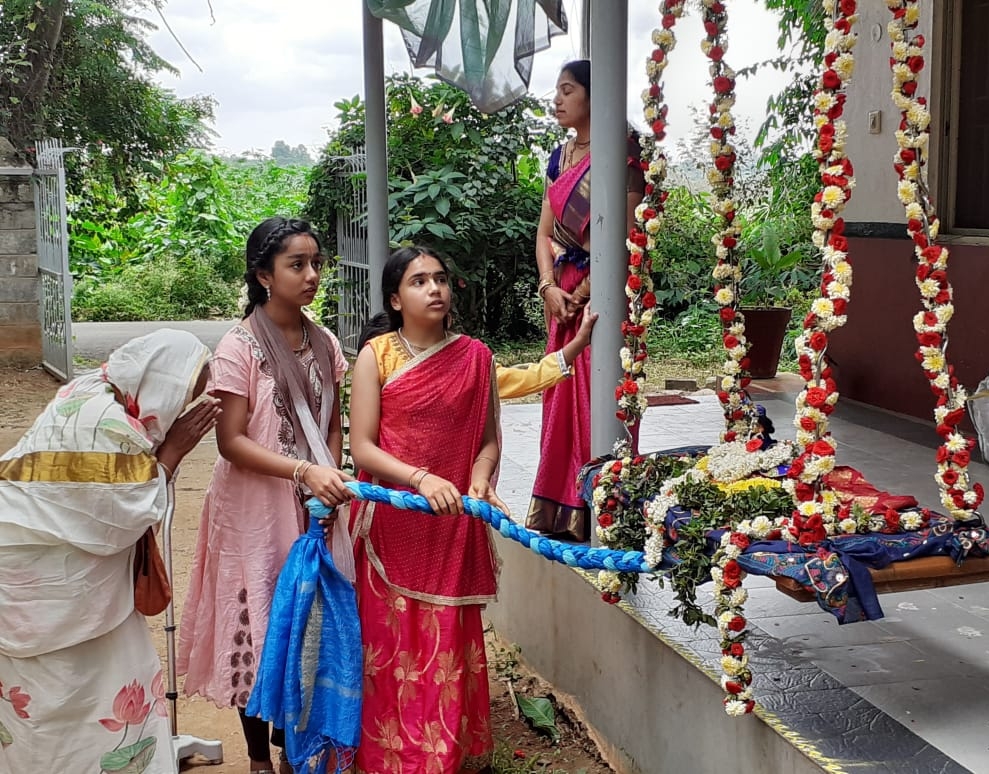
Only when we are connected to something or someone we don’t exploit them, on the contrary, we treat them as our own and respect them. For example- when we feel related to our children, we never exploit them. The thought of exploiting our friends never crosses our mind. Education that consciously draws connection between all the 4 pillars of व्यष्टि (family/self), समष्टि (society), सृष्टि (environment), परमेष्टि (God/Spirituality) will enable students to see things and relationships around him in connection to each other.
If we look around, most of education in today’s schools is result oriented- to pass exams, shallow on imparting principles and does not emphasize on teaching these vital connections to a child. Therefore, it is creating a large populace with shallow understanding of life & a shallow value system.
This shallowness also becomes second nature of the student who goes through such an education for over 20 years of his precious lifetime. When the child is not taught to see these vital connections in his life, his life view is partial. Gradually, such a disconnected partial view becomes part of the student’s understanding and later might lead to individualism, or he freely may exploit resources or भोगवृत्ति (materialism, consumeristic). He/she may experience issues in relationship with friends, relatives and colleagues as he has not fully understood the connections.
An important aspect of holistic education is to enable the child to see his connections to these 4 pillars and enable deeper thinking, virtue of discipline, engage him in सेवा (service) so that it cultivates seva bhava in him and gift him with a learning centered living. This is achieved through the curriculum (examination-free curriculum), pedagogy (panchkoshas based) and lesson planning that addresses iccha shakti, gyan shakti and kriya shakti of the child, a learning environment and most importantly by being with acharyas who are sadhakas (साधक) or spiritual practitioners- who are striving to sincerely see things (दृष्टि) in connection with each other.
An example of a holistic lesson: When children are taught business math (at the age of 12), by means of stories/ discussions/ experiences/ activities, the student spends a good amount of time to first learn what is consumerism, what is the result of exploitation of nature and natural resources, what is need vis-a-vis greed, value vis-a-vis cost, importance of relationships, tangible and intangible profit etc. Only after these seeds are sown, the academic part of studying percentage, money, cost price, selling price, profit, loss, banking etc begins for him.
In our country, teaching was considered as the most noble and respected profession. We have come very far from that point. Today, education is the biggest business. This kind of education has led to a trust and respect deficit in the world for both the teacher and the education institutions. Today people don’t have the type of respect they had for teachers and the teaching profession.
What is the future of the country:
These are serious issues, we need to look into and find solutions to. One of the vision elements of VidyaKshetra is to:
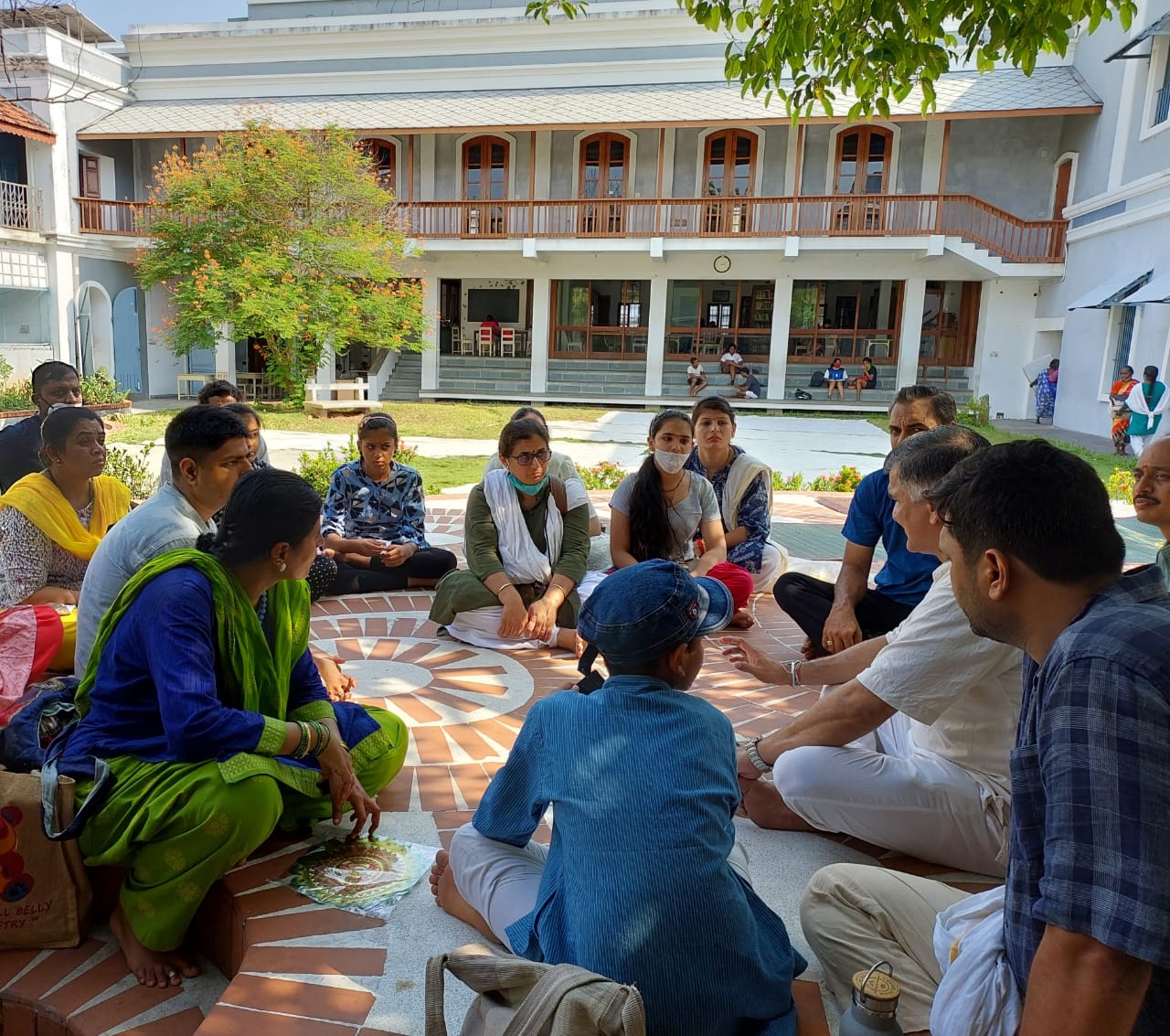
[स्वयमाचरते यस्मात् आचार्यस्तेन चोच्यते ॥ (Vayu. Pura. 59. 29-30)]